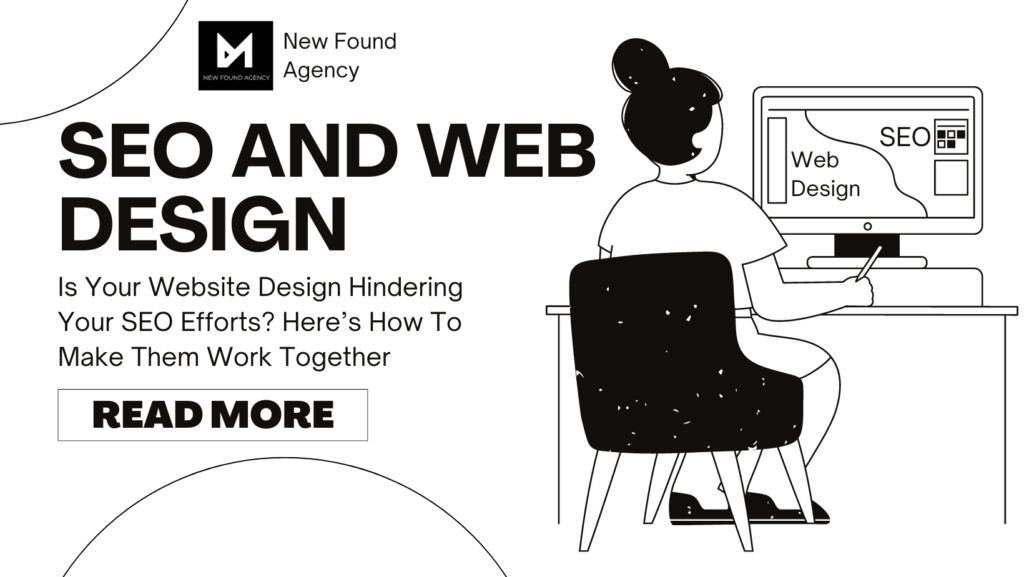Many business owners and web developers don’t realize that website design can significantly affect search engine optimization (SEO). If your site isn’t designed with SEO in mind, you might be missing out on valuable traffic. Here’s a detailed look at how your website design might be hindering your SEO efforts and steps to make them work in harmony.
Understanding the Impact of Website Design on SEO
First, let’s explore how website design impacts your site’s SEO:
- Navigation and Structure:
- A site that’s hard to navigate confuses not only users but also search engines. A well-structured website with clear navigation helps search engines index your site quickly and easily, which enhances your rankings.
- Mobile Responsiveness:
- With more people using mobile devices to browse the internet, Google and other search engines prioritize mobile-friendly websites. If your site isn’t optimized for mobile, you’re likely to lose out on a significant portion of potential traffic.
- Page Speed:
- One of the most critical aspects of your site that affects both SEO and user experience is load time. Websites that load slowly can be penalized in search rankings and also turn off visitors who don’t want to wait.
- User Experience (UX):
- Search engines like Google use various metrics to gauge the UX of a site, including how long visitors stay on your site, their interaction levels, and whether they return. A poor UX can harm your rankings.
Steps to Align Your Website Design with SEO
Now, let’s get into how you can improve your website to make it SEO-friendly while keeping design in mind:
- Simplify Your Navigation:
- Create a straightforward menu that makes it easy for users to find what they’re looking for. A clear path not only improves user experience but also aids search engines in indexing your pages.
- Optimize for Mobile Use:
- Ensure your website is responsive, meaning it automatically adjusts to fit the screen of the device being used. This improves user experience and supports SEO.
- Improve Load Times:
- Optimize images, leverage browser caching, and minimize HTTP requests to boost your site’s speed. Faster load times improve user satisfaction and help your site rank better in search results.
- Use SEO-Friendly URLs:
- Ensure your URLs are short, meaningful, and include keywords relevant to your content. This makes it easier for search engines to understand and rank your pages higher.
- Enhance Visuals but Optimize:
- Use high-quality images and videos to make your site appealing but optimize them for quick loading. Large files can slow down your site, negatively impacting your SEO.
- Consistent Content Updates:
- Keep your content fresh and relevant, which not only engages users but also gives search engines new content to index. Regular updates signal to search engines that your site is active, boosting your rankings.
- Use Heading Tags Properly:
- Organize the content on your pages using heading tags (H1, H2, H3, etc.). These tags help search engines understand the structure of your content, making it easier to index.
- Incorporate Social Sharing Buttons:
- Including social sharing buttons on your site encourages sharing, which increases the visibility of your content and can lead to higher traffic and improved SEO.
- Optimize for Accessibility:
- Ensure that your site is accessible to all users, including those with disabilities. Accessibility improvements can help your SEO since search engines favor sites that cater to all users.
- Link Internally:
- Internal linking helps search engines discover new pages on your site. It also increases the time visitors spend on your site, which can positively affect your SEO rankings.
Implementing SEO in the Design Process
Integrating SEO into your website design isn’t just about adding more steps to the design process; it’s about considering SEO as a fundamental component of the design. Here’s how you can incorporate SEO from the start:
- Plan SEO Before You Design:
- Before you even start designing your website, have an SEO strategy in place. This includes keyword research and knowing your target audience.
- Collaborate Across Teams:
- Ensure that your web designers work closely with your SEO team. This collaboration will help in creating a design that not only looks good but is also optimized for search engines.
- SEO Audit:
- Regularly perform SEO audits to identify and fix issues such as broken links, improper redirects, and overuse of keywords.
Conclusion
Merging good design with effective SEO practices is crucial for any website aiming to increase its visibility online. By considering SEO as an integral part of the design process and making adjustments based on the points outlined above, your website will not only look great but also rank well in search results. Remember, the goal is to create a site that satisfies both users and search engines – a balance that will pay off with increased traffic and better engagement.

